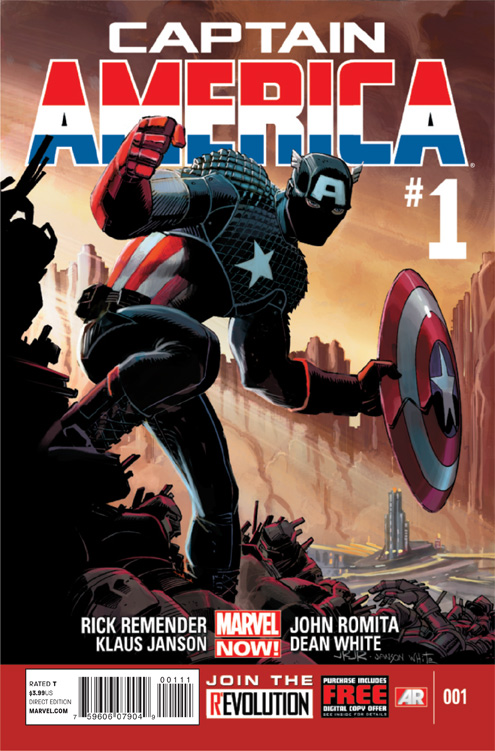 After 8 years of Ed Brubaker on Captain America, the writing duties have shifted to Rick Remender as part of Marvel Comics relaunch Marvel NOW!. Teaming with legendary artist John Romita Jr., Captain America #1 was unleashed on to comic fans around the world today. After hearing from Remender about his plans for the book, including getting a glimpse at Steve Rogers’ childhood and the emergence of Arnim Zola as a major villain, we finally got to see what Remender had in store for Captain America.
After 8 years of Ed Brubaker on Captain America, the writing duties have shifted to Rick Remender as part of Marvel Comics relaunch Marvel NOW!. Teaming with legendary artist John Romita Jr., Captain America #1 was unleashed on to comic fans around the world today. After hearing from Remender about his plans for the book, including getting a glimpse at Steve Rogers’ childhood and the emergence of Arnim Zola as a major villain, we finally got to see what Remender had in store for Captain America.
With the issue released, we sat down with Remender to breakdown the issue and hear what his analysis of some of the key parts of the book…
** SPOILER WARNING **
We will be discussing the events of Captain America #1 below, so if you haven’t read the issue yet and don’t want it spoiled, then well, go read it and come right back here!
iFanboy: The book starts with a young Steve Rogers on the Lower East Side of New York City in 1926. What did you do to research that time period or get in the mindset? How are you approaching writing Depression era young Steve?
Rick Remender: Well, to get in the era there’s a number of websites that deal with the historical realities of what went on and the series of events and then how it affected the population. Prior to the Great Depression there was already a large population of Irish and other immigrants that were having a hard time, and then when it hit, when the market collapses, it just spirals down. So what I read to get into a more human…to focus on the humanity of it as opposed to just the stark reality of the events was to read a few essays that people wrote who lived through it, and one of them was a woman who was inspiring. And a lot of her thoughts seem to be the kinds of things that would empower and build somebody like Steve Rogers.
I was inspired by that a good bit, and then sat down and spent a few days writing what I think…building the character and what I think she thinks, and how she’s reacting to all this, and how it informs Steve Rogers, and how you build somebody who becomes the greatest hero of a nation, which is the log line or the sort of thing I keep trying to myself focused on is how we’re building a patriot. We’re building a strong god-like leader. I say “god-like” in that he demands respect. You know the character, Captain America. That was that.
iF: In previous conversations when we’ve talked, you said that there isn’t a lot about young Steve before getting the super-soldier serum. Are you fleshing out his family, or was there somewhere in the Marvel archives that already defined that his dad was an Irish immigrant and his background?
RR: Yeah, there was. His parents, the fact that his dad was a drinker, when things happened with his family – the very basic strokes had been hit and defined, but it left so much. It was very broad strokes. I’m building off of what was already canon, which was his father was a drinker and that they were immigrants and X, Y, and Z. But then I’m taking that and filling in the rest of story, which I think is an important one. It’s exciting to tell. It’s great to see John Romita Jr. doing the true origin of Captain America growing up. I think that it’s got a lot of heart. We’re into issues four and five right now, and I can see where it’s going.
I think that it’s a side of him we haven’t seen before. Hopefully, it helps you understand Steve as a human being. So often, because of the iconography, what he represents, and the pedestal that he’s up on, it’s hard to identify with him as a human being. That was really the challenge that I set for myself. I don’t want to have to kill him or throw him in a time travel situation or have a new person come in. I want to just make you understand and care about Steve Rogers as a human being with a backstory, more than just a guy.
There’s heroism in those World War II stories and there are character-defining moments but it’s very difficult to identify with somebody who’s so fearless and so empowered in that situation. What excites me more is the kid, the 98-pound weakling, who refuses to not go fight in that before he’s empowered, and before he has all the strength and what led to that character in the first place.
 iF: What was the previous series that touched on Steve Rogers history that you referenced in your research?
iF: What was the previous series that touched on Steve Rogers history that you referenced in your research?
RR: It was The Adventures of Captain America: Sentinel of Liberty miniseries from ’91. At this point, my head is a soup of research. I think it was Kevin Maguire drawing [Fabian Niceza wrote it – iF]. Obviously, when you’ve got a Tom Brevoort you can… what I did was, I wrote up a Steve Rogers character sheet, like I would for a new character, then I bounced it off of Tom to get all of the backstory and to make sure that I had his opinions, and his outlook and everything nailed.
The same way that I would develop a new character, I wanted to develop Steve that way, so that I fully understood him. Tom would catch things that didn’t quite jive or weren’t historically correct in terms of continuity and we would adjust those. This was a lot of coming from Tom as well as the very basic beats of what happened to Steve growing up.
iF: After the childhood flashback, the story moves to the present day and we see Captain America in action. What can you tell us about The Green Skull?
RR: [laughs] The Green Skull. It’s so easy to make these ultra-right-wing villains and I like the idea of making an ultra-left-wing one. I myself am a bit of a bleeding-heart liberal. I like the idea of taking somebody on the left and leaning them into the villain spectrum, where it’s that diabolical scheme like, “Yeah, killing off humanity probably would save the planet from some of our polluting, and warring and things.” But for him, he’s obviously a crazy extremist who sees all other life as equal to or more important than humanity, so he’s going to wipe out humanity in order to save the rest of the world. He sees that as the only way.
We’ll be seeing him later again. I wanted to set up his plot. I’ve got a lot of plans for him down the road. He’s a kook. I just write him like Dennis Hopper from Apocalypse Now. So he’s a lot of fun. In terms of the character I don’t think we’ve seen anything like him in the Marvel Universe. So, yeah, and I wanted to give you a hint here.
I like trying, with these high adventure books, to open up with the Indiana Jones cold open, something that shows you the hero in action against some kind of a threat that is interesting, exciting, and defines who the hero is. That opening of Indiana Jones, it tells you most things you need to know about Indiana Jones, and so that was the attempt here is to open up with a bang and get into something exciting and introduce The Green Skull who will play a role in the year, too.
iF: After The Green Skull gets apprehended, Steve meets up with Sharon Carter. How are you positioning that relationship, because already in just a couple panels it seems as if they’re a little more together than I’ve ever seen them during Brubaker’s run. I mean it seems like they’re really like a couple.
RR: That’s one of the things that I like to do when I take over a book is to figure out where I want relationships to go and what end result I want out of that. And what I’m setting up here we won’t see the results of for a long time. I’m playing a long game here, but I like it when you open up a new book and the ball is moved down the field, and that things have changed.
And I did that with X-Force, where Warren and Betsy were already in bed dealing with life. We’ve seen them courting. We’ve seen them come together in previous X-Men books, and so I wanted to bypass that and get right to eight months later, boom, into the story. And a lot of what I’m doing with Steve and Sharon is very similar to that. I wanted to move the ball down the field off panel and then catch you up at a time that was like, “Whoa, shit!” And it’s not just a whimsy. It definitely has a big part, a big role to play in the unraveling of the story.
iF: Where did the idea come to have an ancient subway line be the transportation method into Dimension Z?
RR: I realized, well, why would that thing be down there? And I was like, oh…I’ve seen videos of people going down and basically spelunking these old antiquated subway lines down there, and so it just seemed like an interesting thing to do. Instead of just having it be some villain built a whole subway line, I just thought it was cooler if it was something actually existed.
We haven’t seen Dimension Z before. You don’t know anything about it. It’s an unraveling that will take seven or eight issues before all of the big shazams hit you. And it is entirely… it’s not created. The place wasn’t created by [Arnim] Zola. It was a dimension that he found and then set up camp because he was tired of being screwed with here on Earth. But what he’s been doing there, there are some big secrets. A lot of what he’s been doing with his bioengineering has taken over a lot of the world they’re on, so a lot of the experiments he’s creating. Here’s a guy who basically just likes to mix three or four life forms together and bioengineer new creatures and go… he sees himself as an artist.
And he’s got his own planet now, so as he creates these things and he releases them into the wild, they have time to become natural to the environment and evolve there. And I can’t explain much more without killing a big reveal we have coming up, but, yeah, there’s a lot of cool stuff. And it’s going to be an adventure for Steve making his way through this place. And it has some nice reveals.
iF: One thing that I noticed was that in the opening scene with The Green Skull, and then even in this torturous scene with the Zola, in the narration, you’ve got Steve kind of describing the pain and the… almost the humanity of what he’s going through. He’s got the super-soldier serum, we often see him as invincible; do you see Cap as invincible? Or is there truly still a humanity underneath all the muscle and the super-soldier serum?
RR: Yeah, I think he’s far from invincible, which is why I’m drawn to the character, because he is just a pinnacle of human ability. He’s not Superman; if you shoot him, he dies. He is not invincible. If he falls out of an airplane, he explodes on the ground. There are real stakes for Steve. When he breaks his hand, it heals a little quicker because of the super-soldier serum, and his hand is harder to break because he is the pinnacle, the very – he’s the very perfect, 100 percent the best of what we can be. But he’s still just a person.
And so that invulnerability opens him up to… I don’t know, I mean, it’s a lot different for me in terms of writing him than somebody like, Wolverine, who, in order to hurt him, I have to do craziness at this point. And with Steve, it’s not really the case. With Steve, he’s much more vulnerable and prone to injury, and I think that that’s — for me, anyway, for writing one character — it makes the stakes higher, and I’ve found it to be a little more enjoyable.
iF: Arnim Zola has often been a not-very-taken-serious villain and I was surprised to see the family aspect to him in this issue. We get introduced to a baby, his son, and it looks like he has a daughter. What can you tell us about Zola’s family, of course without revealing any future story points?
RR: We start to reveal what it is he’s up to around issue #3, where we do some flashbacks on Zola in the 20s as well. And, Zola for me is science fiction and horror mixed. And we get a good taste of the science fiction at first, and then we slowly unravel the horror of what somebody like this, what a biofanatic, somebody who sees life as clay for him to experiment and play with, that leads to some horrible things.
As for why he has this family and what it is that he’s up to, I wouldn’t want to give that away, because I think that’s a nice reveal later down the road. But he does have a set of objectives that go back to his relationship with his parents and his relationship with The Red Skull and Hitler and World War II. We spent a lot of time trying to come up with that natural next step that is not only natural and makes sense in terms of character, but is also such an escalation that Zola becomes somebody who is – like after my first year or two of Cap, when you see Zola, I want you to be like, “Oh God,” like it’s Hannibal Lecter. He’s a terrible serial killer nutjob.
And that’s what got me the most excited about the character, was being able to mix horror and science fiction in such a way where you’ve got this big Kirby creature with, a screen on his chest, but he’s a Nazi who experiments on the living to create new life. That to me was like well, this dude is wonderful and terrible. Once we start to see the horror of this and to see the pain he inflicts on people and to see the craziness, the lengths that he’ll go to for his experiments, then we’ll start to really hate him. And then, of course, all of those motives get tempered a little bit when you meet his family and you see what his other motives are, so that he’s not completely one-dimensional. You know, you want to make sure that there’s something there that feels human and motive-wise can confuse you in your emotions, where you can maybe even identify with this monster.
 iF: When Captain America escapes from Zola, I noticed, he grabs his shirt. Was that something you specified in the script or something that Romita added to it?
iF: When Captain America escapes from Zola, I noticed, he grabs his shirt. Was that something you specified in the script or something that Romita added to it?
RR: That sequence got changed a little bit when John drew it. Yeah, no, I didn’t. I think that… I don’t remember exactly how that all came together. I think it was just a mandatory beat where he grabbed his stuff on the way out, or else he’d be running around in the nude for a while.
iF: It was a nice level of detail, I thought. It’s like, “Oh, let me grab my shirt.”
RR: Yeah. Well, he grabs it when he gets his shield, so it’s all one big scoop. He’s just like, “Well, I might as well. I mean, OK.” It is his armor and whatnot. He probably was thinking in terms of protecting himself.
iF: In addition to grabbing his costume and his shield, he also grabs Zola’s baby. What is it about Steve that as a character would think to stop and grab the child as he’s trying to escape from his life being in danger?
RR: Well, I just think it’s everything about Steve. I think that, you want to find situations that define the character. I think Steve has been drugged, he’s just had something injected into his heart, he’s in another dimension. I mean, things have gone terrible for him, all of a sudden, and I like that that comes out of nowhere. I like that when the supervillian’s plot is hatched, that it isn’t some long, drawn-out… it’s boom! It’s hey, bop bop bop bop bop, you’re knocked out, you wake up, and I’m already doing my thing to you.
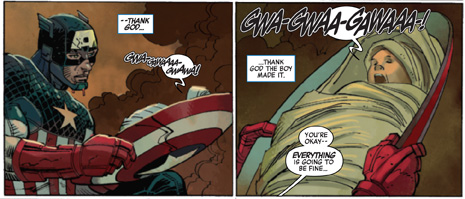 And so Steve wakes up in the middle of that in total agony and complete pain, still doped up from the sedatives that they gave him, and still, with no certainty that he’s going to be able to escape this scenario, or what he’s escaping into, he’s not going to let Arnim Zola have a child. And I think that that defines Steve at that moment. It says that he’s not somebody who… he’s somebody who would risk everything to ensure that this child is not left in the care of one of the most despicable creatures that he knows.
And so Steve wakes up in the middle of that in total agony and complete pain, still doped up from the sedatives that they gave him, and still, with no certainty that he’s going to be able to escape this scenario, or what he’s escaping into, he’s not going to let Arnim Zola have a child. And I think that that defines Steve at that moment. It says that he’s not somebody who… he’s somebody who would risk everything to ensure that this child is not left in the care of one of the most despicable creatures that he knows.
iF: Looking back on the first issue, when you first got the assignment, when you first heard you’d team up with John Romita Jr., and now you’re holding the issue in your hand, is it what you had initially envisioned, or did it take some changes through the path, or how happy are you with the first issue?
RR: I’m really happy with it, you know? When you do that thing where on something that has this much… it’s a lot of pressure. And when you write something that has this many eyes on it and has sold this many copies and is going to be scrutinized like it is, I’m as proud of this as anything I’ve done.
I feel like it’s maybe my strongest first issue in terms of how much we do, how much character we establish within these pages, how much action, and how quickly it happens. I don’t think that — and again, I’m talking about my own work here, which is weird and arrogant — but I don’t feel like it reads hyper-compressed in a bad way. I feel like it’s a shotgun blast, but we’ve managed to smooth it out to where there’s not a wasted panel in the entire issue. Every panel accomplishes something. That always makes me feel good.
As for the tone of the story and where we’re taking it, I love this stuff. This is like getting to revisit the kind of stories I was doing in Fear Agent for so long. Being able to that with Steve Rogers while also really getting to unearth who the character is and to dig into defining him, I feel terrific about it. I really do.
I have reread this a few times out of the anxiety before it comes out. You have an anxiety level of, “Are people going to like this?” I am at a place where I like it enough that if people don’t, I can at least be like, “It’s what I like.” That’s all you can, really, at the end of the day do, is your best to make yourself like the thing.
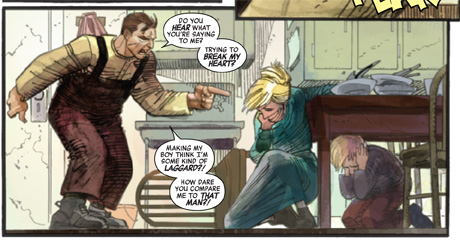
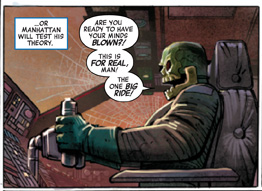

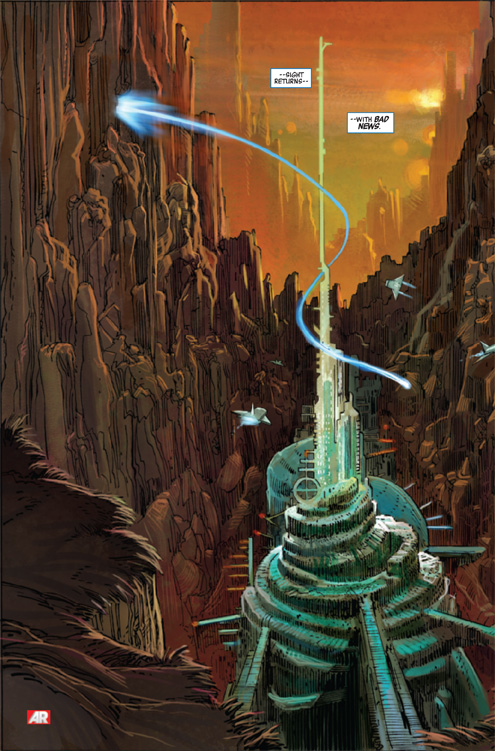
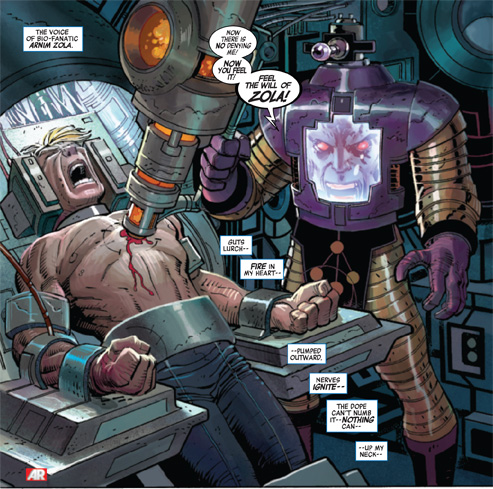


Ivs enjoyed all the marvel now books. Even xmen legacy and deadpool. Great creators on great characters that’s how u do a relaunch.
Haven’t picked this up yet, but it looks awesome!
Romita Jr can be a hit or miss for me at times, but with Dean White this looks to be some of his best stuff I seen him do in a long time. Really looking forward to this
Seems like it can be hit or miss right in the same issue. Some of those panels are amazing. Others… well, I’m no art critic, so I’ll keep my mouth shut.
On the miss side, Caps must have told a lie since his nose has grown significantly. On the hit side, the panel with Zola drilling Steve’s chest is awesome.
I love that Captain America mini-series Rick mentions. I don’t think it’s collected, but it’s an excellent Captain America origin story. It would’ve been a great book to reprint for the movie, actually.
This was a great interview. I haven’t read Captain America since the Dan Jurgens run in the early 2000s, but i jumped on with this issue and loved it! I absolutely can’t wait to see what Rick Remender has in store for Cap next!
Remender really likes to torture his heroes. I just hope JRJR will be consistent in the art division.
Does Remender always write his comics with those choppy “thought boxes” that Cap has going on. I found it an agonizing read. My only other exposure to Remender is Venom #1. I found it very enjoyable, but I don’t recall it written the same way. Is this style exclusive to Cap?
Uncanny X-Force is written in the same style.
Thank you. Not my style.
This first issue didn’t blow me away. Cap is my favorite Marvel hero so I don’t plan on dropping it anytime soon. Hopefully this will get better. I commend Remender on thinking outside the box with Cap.